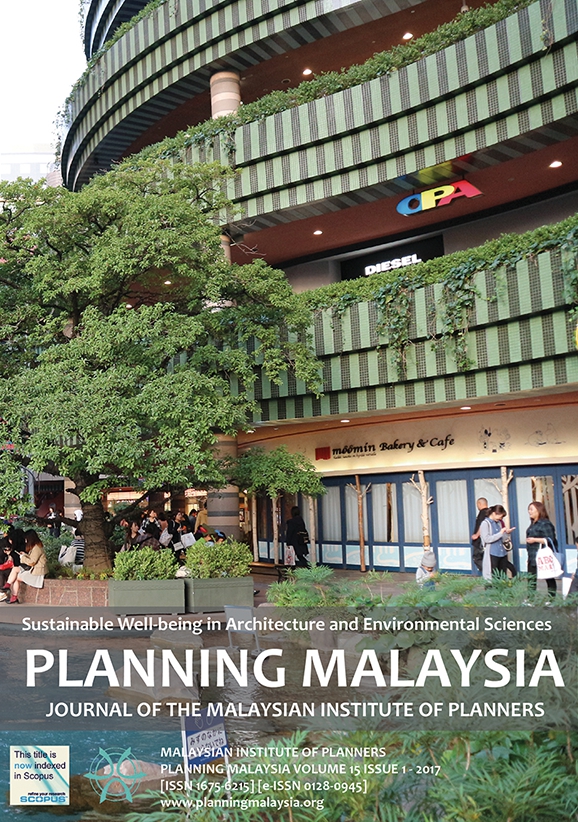FEEDER MODE CHOICE SELECTION BEHAVIOURAL MODELLING: THE CASE OF KTM KOMUTER, KUALA LUMPUR
DOI:
https://doi.org/10.21837/pm.v15i1.223Keywords:
Feeder bus, KTM Komuter, public transportation, multimodal transportation system, integrated public transportation.Abstract
Transit oriented development propagates the use of feeder services such as buses, taxis and paratransit to support the main rail trunks (Taylor, 1982; Limtanakool et.al, 2006; Alshalalfah & Shalaby, 2007). This paper attempts at explaining the preferences of passengers of a Malaysian rail service towards feeder buses, factors influencing their choices and recommendations to encourage the KTM Komuter passengers to switch mode to feeder services instead of driving theirprivate vehicles to and from stations. Using on-board intercept survey method, some results of 200 samples were analysed for the research. Findings showed that 76% of the passengers did not prefer to use the feeder. As such, the chi-square analysis did not find any socio-demographic factors such as gender, income, level of study, employment types, to be significant in explaining this mode switching behaviour. Some trip characteristics such as vehicle ownership, frequency and
length of using the KTM Komuter service also did not significantly influence the passengers' preference in using the feeder bus service. Other factors were then examined, including stations’ characteristics, users’ access and egress behaviours, travel time and distance. Therefore, in order to encourage the KTM Komuter users in using the feeder bus service, several recommendations such as providing an efficient, reliable frequency and catchment areas of feeder bus services were made.
Downloads
References
Alshalalfah, B.W., & Shalaby, A.S. (2007). Case study: relationship of walk access distance to transit with service, travel, and personal characteristics. Journal of Urban Planning and Development, 133(2), 114-.
Bachok, S., Osman, M. M., Khalid, U. A., & Zainaldin, M. F. (2012). The application of regression analysis on users’ tolerance to prolonged waiting time: the case of KTM Komuter services of Malaysia. 13th International Conference on Design and Operation in Railway Engineering 2012 (COMPRAIL 2012), New Forest, UK.
Bar-Yosef, A., Martens, K., & Benenson, I. (2013). A model of the vicious cycle of a bus line. Transportation Research Part B: Methodological, 54, 37-50.
Bouf, D., & Hensher, D. (2007). The dark side of making transit irresistible: the example of France. France: Transport Policy, 14(6).
Ceder, A., & Yim, Y. (2003). Integrated smart feeder/shuttle bus service. California PATH working paper UCB-ITS-PWP-2003-4.
Chien, S., & Schonfeld, P. (1998). Joint optimization of a rail transit line and its feeder bus system. Journal of Advanced Transportation, 32(3), 253-284.
Elhabiby, M. M., Fikry, A. O., Mahdy, H. A., & Kandil, K. A. (2013). Influence of unscheduled random public bus stops on transit travel time. Journal of Traffic and Logistics Engineering, 1(1), 20-21.
Glaeser, E. L., Kahn, M. E., & Rappaport, J. (2008). Why do the poor live in cities? The role of public transportation. Journal of Urban Economics, 63(1) , 10.
KTM Komuter (2010). KTM Komuter Station Facilities. Retrieved July 17, 2013, from KTM Komuter Website: http://www.ktmkomuter.com.my/station_maps/station.php#here
Kuah, G. K., & Perl, J. (1988). Optimization of feeder bus routes and bus-stop spacing. Journal of Transportation Engineering, 114(3), 341-354.
Limtanakool, N., Dijst, M., Schwanen, T. et. al., (2006). The influence of socioeconomic characteristics, land use and travel time considerations on mode choice for medium- and longer-distance trips. Journal of Transport Geography, 14(5), 327341.
Lomax, T., & Schrank, D. (2010). Developing a total travel time performance measure a concept paper for mobility measurement in urban transportation. Texas: Texas Transportation Institute (TTI).
Martin, E., & Shaheen, S. (2011). The impact of carsharing on public transit and nonmotorized travel: an exploration of North American carsharing survey data. Energies (4), 2096-2108.
Performance Management & Delivery Unit [PEMANDU]. (2011, March 18). St Regis Development Entry-Point Project to Boost Tourism Space. Retrieved July 19, 2013, from Economic Transformation Programme (ETP): http://etp.pemandu.gov.my/News-@-St_Regis_Development_Entry-Point_Project_to_Boost_Tourism_Space.aspx
Soltani, A., & Ivaki, Y. I. (2011). Inequity in the Provision of Public Bus Service for Socially Disadvantaged Groups. Journal of Sustainable Development, 4(5), 231233.
Downloads
Published
How to Cite
Issue
Section
License
Copyright & Creative Commons Licence
eISSN: 0128-0945 © Year. The Authors. Published for Malaysia Institute of Planners. This is an open-access article under the CC BY-NC-ND license.
The authors hold the copyright without restrictions and also retain publishing rights without restrictions.


